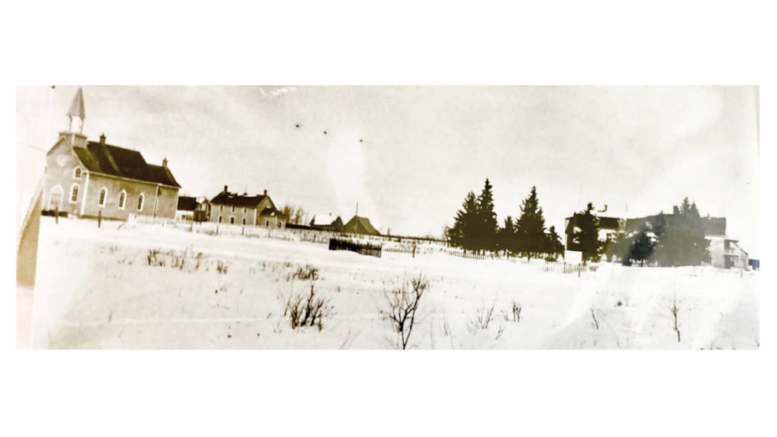By Jeremy Appel, Local Journalism Initiative Reporter
(ANNews) – There could be as many as 179 childrens’ remains in a mass grave found on Saddle Lake Cree Nation at the former site of the Blue Quills Indian Residential School, according to data sets from a ground-penetrating radar (GPR) survey.
An updated report from the Acimowin Opaspiw Society (AOS) non-profit, which conducted the GPR search, includes the data sets from its October 2022 search.
“We don’t know until we excavate,” Leah Redcrow, executive director of the AOS, said of the number of children buried in the mass grave.
Redcrow has a long history with the Blue Quills forced assimilation institution, with three generations of her family imprisoned at each location.
The Blue Quills institution was located in Lac La Biche from 1890 to 1898, on Saddle Lake Cree Nation which included the Sacred Heart Cemetery, from 1898 to 1932, and then St. Paul County until its closure in 1970. Even after the school moved to St. Paul, the bodies of children who died were transferred to Sacred Heart for burial.
The mass grave was accidentally discovered in 2004, but it wasn’t until last year that its existence was confirmed with the use of GPR. Its existence is not accounted for in the records of the school’s home parish, the Archdiocese of St. Paul, which collaborated with AOS on the investigation. These records account for when children were baptized and when they were buried.
In order to account for a mass grave, the records would have to include a “number of back-to-back deaths within a 1-4 week period, buried on the same day or within a short time period,” the report notes.
“There’s nothing like that in the records,” Redcrow explained.
The records provided to AOS indicate 335 children died from tuberculosis, likely from drinking unpasteurized milk from cows that weren’t tested for TB.
The updated AOS report notes that Blue Quills’ principal asked for the cows to be tested in 1944, indicating a suspicion they were infected, but the Department of Indian Affairs said its resources were spread too thin.
The search of the mass grave found irregularities between eight centimeters and 20 centimeters from the grave’s surface. Redcrow said the grave’s shallowness is a major concern.
According to the lead archeologist AOS is working with, the grave’s lack of depth places the remains at risk of erosion or being dug up by animals. Redcrow said dogs are already “hanging out a lot in the cemetery.”
There are suspected to be two more mass graves on site, which have yet to be located, in addition to individual unmarked graves throughout the cemetery. Adding to the complexity is the fact that Sacred Heart is still used as a cemetery to this day.
“The children’s graves are absolutely everywhere,” the AOS report notes, “unmarked and shallow, and being accidentally disturbed, each time a new grave gets dug in Sacred Heart. The community must immediately stop new burials at this site.”
Another challenge is the excavation itself, which must be conducted by the provincial chief medical examiner. But the examiner’s office hasn’t responded to AOS’s inquiries, nor has the RCMP.
Alberta Native News reached out to the office of the chief medical examiner for comment, but it hasn’t provided any by press time.
In late-February, Indigenous-Crown Relations Minister Marc Miller visited Saddle Lake Cree Nation to hear the concerns of residential school survivors and visit the site of the mass grave.
“He was very sympathetic,” said Redcrow. “We’re actually really thankful that he came and got to hear from the survivors. That was the first time a federal minister ever came to our community.”
Survivors would like to see the Blue Quills building ultimately torn down, Redcrow added.
“There’s absolutely no reason to keep it standing there. It traumatizes them to this day. I don’t think that these buildings should be celebrated.”



Be the first to comment on "Up to 179 remains could be in Saddle Lake mass grave"